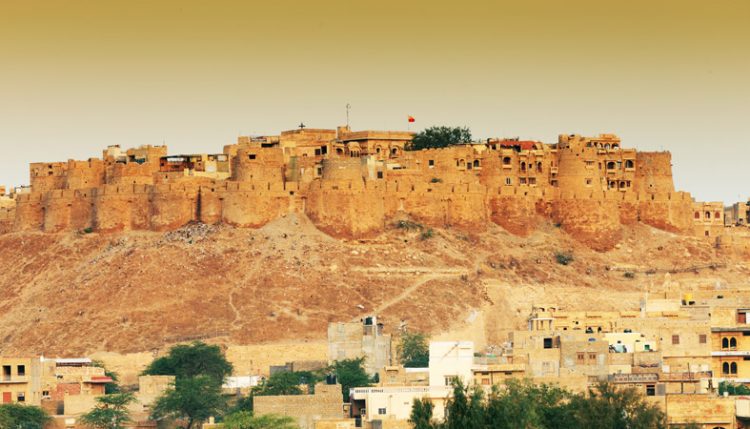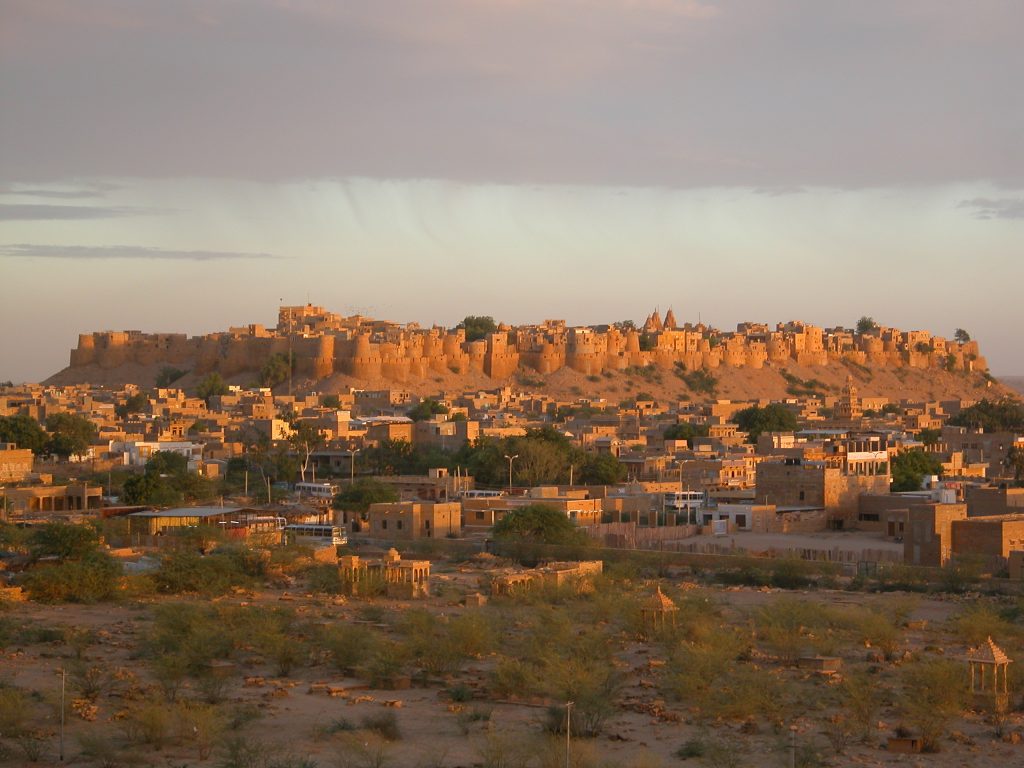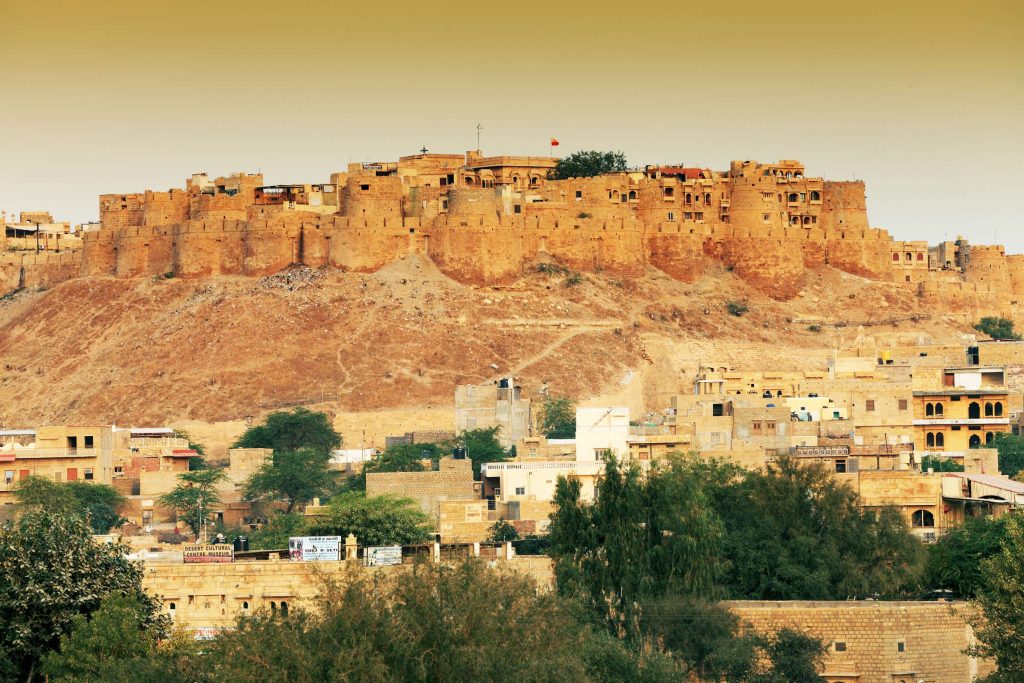
Travel: Jaisalmer, Rajasthan
Sands of time
Time unspools at its own pace in the desert city of Jaisalmer.

The sinking sun is a brilliant orb of orangey-red, a tad too brilliant for the last day of 2007.
It is also playing out its last moments, squeezing every last drop of drama out of the situation. My mount gets restive and I find myself murmuring, oblivious to how ridiculous it sounds, “Easy, Michael.”
Michael is Michael Jackson, my camel.
Michael and I are at the Sam dunes on the edge of the Thar Desert, staring at the aforementioned sun. Along with about 500 hundred other awestruck tourists. The dunes are gently contoured and to my left, two women are dancing the ghoomar for appreciative tourists, the plaintive wail of the ektaara wafting over gently.
Forty miles to the interior of Sam (pronounced “sum”) lies the fortress city of Jaisalmer, and it, too, thrums with life on December 31, 2007.
I repress an urge to constantly exclaim “So much sand everywhere”; the sand is soft as silk and cold as gritty ice.
The fort, seen in the gloaming, is a dull gold, indeed the actualisation of Ray’s Sonar Qila. Soon, lights come on, more from the sprawling interiors than from the outside, and now, the huge structure is a figure of mystery, romance, excitement. I am transfixed.

Living history
The Jaisalmer fort retains every bit of its mystery by daylight, too. The yellow sandstone gleams, struck by the sun at spots, dappled at other spots.
The detailed ornamentation work here and there looks more like trellis-work on wood than carvings on stone. The stone craftsmen who worked their filigree magic on screens, windows, pavilions and balconies are the real heroes of Jaisalmer.
The 12th century fort, the second oldest in Rajasthan, sits on Trikuta Hill and is truly a wonder, being the country’s only living fort. It is 250-foot tall, hedged by a 30-foot high sandstone wall, with 99 magnificent bastions.
The fort houses an entire living area within huge ramparts; at one point of time in history, it housed the entire population of Jaisalmer. Descendants of the fort’s early residents (5,000 at last count, we are told) continue to make their homes in the small rooms, tether livestock in the smaller courtyards, keep body and soul together as tourist guides, drivers, vendors of vegetables, Rajasthan bric-a-brac, juttis and local crafts.
We stop to talk to Poonam Singh Rathore who has a house on the western side of the fort and he tells us that it’s anything but easy, living inside a piece of history.
The wells within the fort are still a regular source of water but drinking water and sewage pipes sometimes get mixed up, the smallest repair needs a host of permissions from “Goment” and despite there being no dearth of money for restoration, the livelihoods of the fort’s denizens seem caught in a time warp. This, then, is the less than romantic aspect of the burrows of the fort.
A wondrous fort
But it is a strange and wondrous fort, indeed. Cows wander down the narrow alleys that wind their way about the fort. Hotels,have set up rooms in the fort and it is quite a sight to see tourists sunning themselves under canopied tables on a rampart here, a parapet there.
Jaisalmer is Rajasthan’s Golden City, and the houses all give off a molten amber sheen. This includes the utterly charming little railway station, too, with its jaali-worked screen and stone benches.
Delving into Jaisalmer’s past is but natural when you are in this historical town. Rawal Jaisal, a Bhatti Rajput, founded Jaisalmer in 1156. In its early days, it was a major trade route to West Asia, Africa, Egypt. The Khilji rulers laid siege to the fort for nine years, eventually having to back off when their water supply ran out.
The fort is approached through Ganesh Pol, Suraj Pol, Bhoot Pol and Hawa Pol and houses the 12 and 14th Century Jain temple complex with its seven temples and 6,000 Thirthankara idols.
There is also the erstwhile Hawa Mahal, now the Fort Museum, which has on display a whole way of life as lived in this desert town by the Bhatti rajas. A bank, offices and several shops are also located near the Amar Sagar Gate to the west.

Photo: Sheila Kumar
Gritty grandeur
Jaisalmer’s intricately worked havelis with their jharokas, balconies and cupolas are famous; originally belonging to wealthy Jain merchants, thesehavelis are gorgeous.
There is the Gadsisar, a small rainwater lake with the regulation cupolas and mandirs; a very pretty place which sees hundreds of migratory birds in season.
Visits to Unda, a traditional Rajput village, the tribal village of Bheelo ki Dhani and Khayala, dunes further out from Sam, the 1,300- year-old Durga temple in Tanot, are musts.
For those with time on their hands, the inclination and the wherewithal, a stay in the plush tented accommodation of safari camps out on the sands, under the starlit sky, is a treat.
The Desert National Park stretches 3,150 sq km beyond Sam and is a vista, home to Monitor lizards, desert foxes, porcupines, occasional wolves and black bucks, the Great Indian Bustard and some deadly sand vipers.

Photo: Sheila Kumar
The presence of the last ruled out a trek in the Park for me. Would I like to venture into the park atop Michael Jackson? my guide Ali asks.
At which, Michael actually turns his head and fixes me with a baleful glare. No, no, I assure Ali hurriedly, I’ll save the Desert Park for my next visit.
I am being economical with the truth. Visit Jaisalmer again, I will, the fort has worked an insidious magic on me.
I don’t know, though, whether I want to meet up with Michael Jackson again.


http://www.hindu.com/mag/2008/02/03/stories/2008020350180800.htm
This ran in THE HINDU of 3 Feb 2008.
Related Links:
FEATURE: THE HINDU/TRAIN RIDES